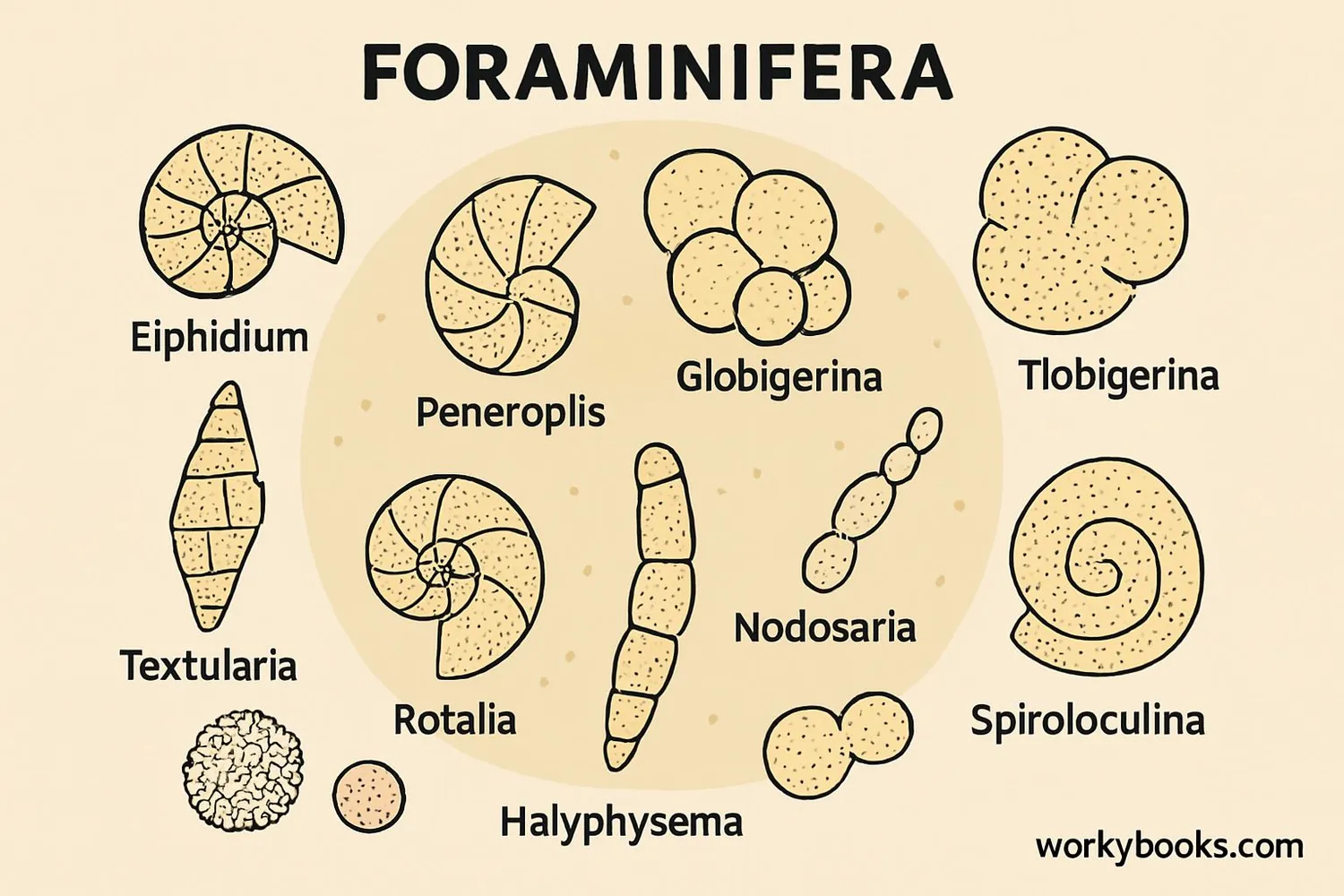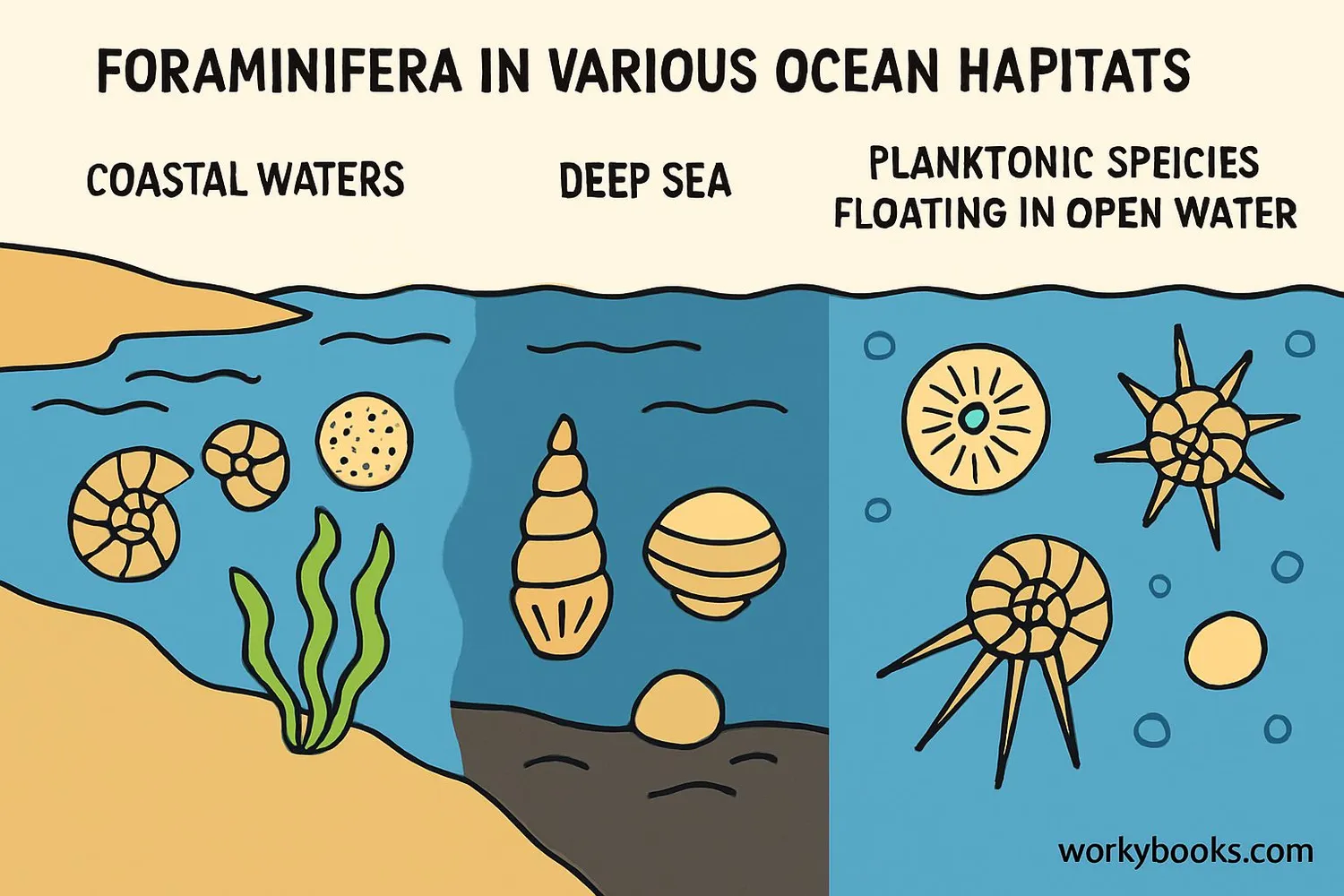Foraminifera: Tiny Ocean Time Travelers - Definition, Examples, Quiz, FAQ, Trivia
Discover how these amazing microfossils help scientists study Earth's history and climate
What are Foraminifera?

Foraminifera (pronounced for-ah-MIN-ih-fer-ah) are tiny ocean creatures that have been around since the Cambrian period, over 500 million years ago! They're single-celled organisms that build beautiful protective shells called tests. These tests are made from materials like:
• Calcite (like chalk and limestone)
• Aragonite (another form of calcium carbonate)
• Agglutinated particles (sand, silt, or other tiny materials glued together)
The name "foraminifera" comes from Latin and means "hole bearers" because their shells have tiny holes called foramen where they extend their protoplasm (living material) to catch food.
Did You Know?
The famous White Cliffs of Dover in England are made mostly of foraminifera fossils! These tiny creatures built the chalk over millions of years.
How Foraminifera Live

Foraminifera live in all marine waters around the world, from shallow coastal areas to the deepest parts of the ocean. Some even live in brackish waters (mixture of fresh and salt water) in estuaries. They're incredibly adaptable!
These tiny creatures respond to changes in their environment, especially:
Salinity
Amount of salt in the water
Temperature
How warm or cold the water is
Substrate
Type of ocean floor surface
Light
Amount of sunlight available
Oxygen
Dissolved oxygen in water
Foraminifera eat algae, bacteria, and detritus (dead organic material). They're an important part of the ocean food web. When they die, their shells sink to the ocean floor, creating layers of sediment that eventually turn into rock.
Microscopic Architects!
Some foraminifera build shells with multiple chambers that grow in amazing spiral patterns. The first chamber is called the proloculus.
Why Foraminifera Matter

Foraminifera are incredibly important for science! Here's why paleontologists and geologists love these tiny creatures:
Time Travelers
Their fossils help scientists date rocks and understand geological time
Climate Detectives
They provide clues about past climate change and ocean conditions
Rock Builders
Their accumulated shells form limestone and chalk deposits
Scientists can study foraminifera fossils to learn about:
• Past ocean temperatures
• Ice ages and warm periods
• Sea-level changes throughout history
• Ancient ocean ecosystems
By examining the chemical composition of their shells and the types of species present in different rock layers, researchers can reconstruct what Earth was like millions of years ago!
Foraminifera Knowledge Quiz
Test what you've learned about these amazing microfossils! Answer all 5 questions to see how much you know.
Frequently Asked Questions
Here are answers to common questions about foraminifera:
Amazing Foraminifera Facts
Discover some incredible information about these tiny ocean time travelers!
Size Wonders
While most forams are microscopic, some fossil species like Nummulites grew to the size of coins! These giant forams helped build the Egyptian pyramids - the limestone blocks contain countless nummulite fossils.
Ocean Rain
In some parts of the ocean, dead foraminifera shells fall to the seafloor so abundantly they create "marine snow" that looks like an underwater snowstorm!
Time Capsules
Foraminifera fossils helped scientists identify the Cretaceous-Paleogene boundary (when dinosaurs went extinct). A sudden change in foram species marks this catastrophic event in Earth's history.
Climate Detectives
By analyzing oxygen isotopes in foram shells, scientists can determine ocean temperatures from millions of years ago with remarkable accuracy!


